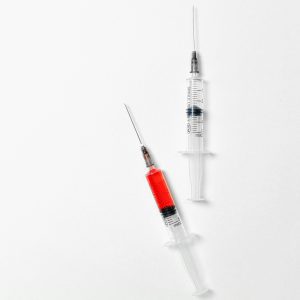
What Is Hypoxia?
Hypoxia is a medical condition characterized by insufficient oxygen supply to body tissues, leading to cellular and organ dysfunction. This can result from reduced oxygen in the environment, impaired oxygen delivery to tissues, or an inability of cells to utilize oxygen effectively.
There are several types of hypoxia. Hypoxic hypoxia occurs when there is a decrease in the partial pressure of oxygen at high altitudes or in situations where oxygen levels are low. Anemic hypoxia is caused by a reduced oxygen-carrying capacity of the blood, often due to conditions like anemia. Ischemic hypoxia results from inadequate blood flow to tissues, limiting oxygen delivery. Histotoxic hypoxia occurs when cells are unable to use the oxygen available, often due to toxins or metabolic issues.
Symptoms of hypoxia may include shortness of breath, confusion, rapid heartbeat, and in severe cases, cyanosis (bluish discoloration of the skin and mucous membranes). Prompt recognition and intervention are crucial to prevent complications and organ damage associated with hypoxia.
Brief History of Hypoxia
The study of hypoxia has evolved over centuries, with milestones in understanding its various forms and implications for human health.
- Early Observations (Pre-19th Century):
- Ancient civilizations observed the effects of high altitudes on breathing and the difficulties faced by individuals in such environments. However, a formal understanding of hypoxia did not exist.
- High-Altitude Research (19th Century):
- In the 19th century, scientists began to explore the physiological effects of high altitudes. Pioneering work by scientists like Paul Bert and John Scott Haldane contributed to the understanding of how reduced atmospheric pressure at higher elevations leads to decreased oxygen availability.
- Aviation and Hypoxia (20th Century):
- With the advent of aviation, hypoxia gained significance in the early 20th century. Researchers studied the impact of reduced oxygen levels at high altitudes on pilots and developed measures, such as supplemental oxygen, to mitigate the risks.
- Medical Advances (20th Century):
- Throughout the 20th century, research into the causes and consequences of hypoxia expanded. Medical professionals gained a better understanding of conditions like anemia, ischemia, and respiratory disorders that could lead to hypoxic states.
- Space Exploration (20th Century):
- The exploration of space presented new challenges related to hypoxia. Researchers and space agencies developed life support systems and technologies to ensure astronauts’ well-being in the oxygen-deprived environment of space.
- Contemporary Research (21st Century):
- Ongoing research continues to explore the molecular and cellular mechanisms underlying hypoxia, as well as its role in various medical conditions. Advances in medical technology and imaging have enhanced our ability to diagnose and treat hypoxia-related disorders.
Today, understanding hypoxia is crucial in diverse fields, including aviation, medicine, and space exploration, contributing to advancements in patient care, safety protocols, and our overall comprehension of human physiology in low-oxygen environments.
Certainly! Here’s the information presented in a brief table format:
| Time Period | Milestones and Developments |
|---|---|
| Early Observations (Pre-19th Century) | Ancient civilizations observed high-altitude effects but lacked a formal understanding of hypoxia. |
| High-Altitude Research (19th Century) | 19th-century scientists like Paul Bert and John Scott Haldane explored physiological effects, linking reduced atmospheric pressure at high elevations to decreased oxygen. |
| Aviation and Hypoxia (20th Century) | Aviation’s emergence highlighted hypoxia risks in pilots. Researchers developed measures like supplemental oxygen. |
| Medical Advances (20th Century) | Throughout the 20th century, research expanded, improving understanding of conditions leading to hypoxia, such as anemia, ischemia, and respiratory disorders. |
| Space Exploration (20th Century) | Space exploration posed challenges, leading to the development of life support systems for astronauts in oxygen-deprived space environments. |
| Contemporary Research (21st Century) | Ongoing research explores molecular and cellular mechanisms of hypoxia, aided by advances in medical technology and imaging for diagnosing and treating related disorders. |
This table provides a concise overview of the historical milestones in understanding hypoxia, highlighting key developments in different periods.
What Causes Hypoxia?
Hypoxia can be caused by various factors that result in reduced oxygen levels in the body or hinder the body’s ability to use oxygen effectively. Here are some common causes:
- Low Oxygen in the Environment:
- High Altitudes: At higher elevations, the atmospheric pressure is lower, leading to reduced oxygen availability.
- Environmental Conditions: Situations such as smoke inhalation, confined spaces, or areas with poor ventilation can decrease oxygen levels.
- Reduced Oxygen-Carrying Capacity of Blood (Anemic Hypoxia):
- Anemia: Conditions that result in a lower concentration of red blood cells or hemoglobin, such as iron deficiency or certain medical disorders, can reduce the blood’s oxygen-carrying capacity.
- Inadequate Oxygen Delivery to Tissues (Ischemic Hypoxia):
- Cardiovascular Issues: Heart conditions, circulatory problems, or shock can impair blood flow, leading to inadequate oxygen delivery to tissues.
- Impaired Oxygen Utilization by Cells (Histotoxic Hypoxia):
- Toxic Substances: Exposure to certain toxins or drugs can interfere with the cells’ ability to use oxygen effectively, causing histotoxic hypoxia.
- Respiratory Conditions (Hypoxic Hypoxia):
- Lung Diseases: Conditions like chronic obstructive pulmonary disease (COPD), pneumonia, or asthma can limit the exchange of oxygen and carbon dioxide in the lungs.
- Respiratory Distress: Conditions that affect the respiratory muscles or result in difficulty breathing, such as acute respiratory distress syndrome (ARDS), can lead to hypoxia.
- Carbon Monoxide Poisoning:
- Inhaling carbon monoxide prevents oxygen from binding to hemoglobin, reducing the oxygen-carrying capacity of the blood.
- High-Altitude Pulmonary Edema (HAPE) and High-Altitude Cerebral Edema (HACE):
- At very high altitudes, individuals may develop fluid accumulation in the lungs (HAPE) or the brain (HACE), leading to hypoxia.
Understanding the specific cause of hypoxia is crucial for appropriate diagnosis and management. Treatment may involve addressing the underlying condition, providing supplemental oxygen, or employing other therapeutic interventions based on the cause of the oxygen deficiency.
What Are the Symptoms of Hypoxia?
Hypoxia can manifest with a variety of symptoms, and the severity and type of symptoms can vary depending on the degree and duration of oxygen deprivation. Common symptoms of hypoxia include:
- Shortness of Breath:
- A feeling of breathlessness or difficulty breathing is a hallmark symptom of hypoxia. Individuals may experience increased respiratory rate and effort.
- Confusion:
- Hypoxia can impair cognitive function, leading to confusion, difficulty concentrating, and memory issues.
- Rapid Heartbeat (Tachycardia):
- The heart may beat faster in an attempt to compensate for the reduced oxygen levels, resulting in an elevated heart rate.
- Cyanosis:
- In severe cases, the skin, lips, and mucous membranes may develop a bluish discoloration due to inadequate oxygenation of the blood.
- Dizziness or Lightheadedness:
- Reduced oxygen to the brain can cause feelings of dizziness, lightheadedness, or a sense of unsteadiness.
- Headache:
- Hypoxia can trigger headaches, which may range from mild discomfort to severe pain.
- Fatigue:
- Oxygen is essential for energy production in cells. In the absence of sufficient oxygen, individuals may feel tired, weak, or lethargic.
- Nausea and Vomiting:
- In some cases, hypoxia may cause gastrointestinal symptoms such as nausea and vomiting.
- Impaired Judgment:
- Hypoxia can affect decision-making abilities and lead to poor judgment.
- Visual Changes:
- Vision may be affected, with symptoms such as blurred or tunnel vision.
It’s important to note that the symptoms of hypoxia can be subtle, especially in the early stages. In high-altitude environments, individuals may experience mild symptoms of hypoxia, known as acute mountain sickness, before more severe symptoms develop. Prompt recognition and intervention are crucial to prevent complications associated with prolonged oxygen deprivation.
Individuals experiencing symptoms of hypoxia, especially in high-altitude or potentially low-oxygen environments, should seek medical attention promptly.
How is Hypoxia Diagnosed?
Diagnosing hypoxia involves a combination of clinical assessment, medical history, and various diagnostic tests. Healthcare professionals use these tools to identify the underlying cause and severity of low oxygen levels. Here are common methods used in the diagnosis of hypoxia:
- Clinical Evaluation:
- Healthcare providers assess the patient’s symptoms, medical history, and risk factors for conditions that may lead to hypoxia. High-altitude exposure, respiratory conditions, and cardiovascular issues are among the factors considered.
- Physical Examination:
- Physical examination includes assessing vital signs such as heart rate, respiratory rate, blood pressure, and oxygen saturation levels. The presence of cyanosis (bluish discoloration of the skin and mucous membranes) may also be noted.
- Pulse Oximetry:
- Pulse oximetry is a non-invasive test that measures oxygen saturation levels in the blood. It involves placing a small sensor on a finger, toe, or earlobe to estimate the percentage of hemoglobin saturated with oxygen.
- Blood Gas Analysis:
- Arterial blood gas (ABG) analysis involves taking a blood sample from an artery to measure levels of oxygen, carbon dioxide, and pH in the blood. This test provides more detailed information about respiratory function.
- Imaging Studies:
- Chest X-rays or computed tomography (CT) scans may be conducted to assess the condition of the lungs and identify any abnormalities that could contribute to hypoxia.
- Cardiac Evaluation:
- If cardiovascular issues are suspected, tests such as electrocardiography (ECG or EKG) and echocardiography may be performed to assess heart function.
- Pulmonary Function Tests:
- These tests measure lung capacity and function, helping to identify respiratory disorders that may contribute to hypoxia.
- Exercise Testing:
- In some cases, exercise testing may be conducted to evaluate how well the cardiovascular and respiratory systems respond to physical activity.
- Polysomnography:
- If sleep-related disorders are suspected, polysomnography (sleep study) may be recommended to assess breathing patterns and oxygen levels during sleep.
The specific diagnostic approach depends on the suspected cause of hypoxia and the patient’s clinical presentation. Once diagnosed, treatment strategies are implemented to address the underlying condition and improve oxygenation. Early and accurate diagnosis is crucial for effective management and prevention of complications associated with hypoxia.
What Are the Different Types of Hypoxia?
Hypoxia is a condition characterized by a deficiency of oxygen in body tissues. There are several types of hypoxia, each with distinct causes and manifestations. Here are the main types:
- Hypoxic Hypoxia:
- Cause: Insufficient oxygen in the environment, often encountered at high altitudes.
- Mechanism: Reduced atmospheric pressure at high elevations leads to decreased oxygen availability.
- Hypemic Hypoxia:
- Cause: Reduced oxygen-carrying capacity of the blood.
- Mechanism: Conditions such as anemia or carbon monoxide poisoning diminish the ability of blood to transport oxygen.
- Ischemic Hypoxia:
- Cause: Inadequate blood flow to tissues.
- Mechanism: Cardiovascular conditions, circulatory problems, or shock can restrict blood supply, resulting in insufficient oxygen delivery to tissues.
- Stagnant Hypoxia:
- Cause: Poor blood flow or stasis of blood.
- Mechanism: Conditions like heart failure or venous obstruction lead to reduced blood flow, resulting in stagnant or slowed circulation and subsequent hypoxia.
- Histotoxic Hypoxia:
- Cause: Inability of cells to use oxygen.
- Mechanism: Toxins or metabolic factors impair the cells’ ability to utilize oxygen effectively.
Each type of hypoxia can manifest with common symptoms such as shortness of breath, confusion, and cyanosis, but the underlying mechanisms and causes vary. Additionally, hypoxia can be acute or chronic, depending on the duration and severity of oxygen deprivation.
Understanding the specific type of hypoxia is crucial for accurate diagnosis and targeted treatment. Medical professionals employ various diagnostic tools, including pulse oximetry, blood gas analysis, and imaging studies, to identify the type and severity of hypoxia in individuals. Treatment strategies focus on addressing the underlying cause and improving oxygen levels to prevent complications associated with prolonged oxygen deprivation.
How is Hypoxia Treated?
The treatment of hypoxia depends on the underlying cause and severity of the condition. Here are common approaches used to address hypoxia:
- Supplemental Oxygen:
- The primary and often immediate intervention for hypoxia is the administration of supplemental oxygen. This can be provided through nasal prongs, a face mask, or, in severe cases, through mechanical ventilation.
- Treatment of Underlying Conditions:
- Addressing the specific cause of hypoxia is crucial. For example:
- In cases of respiratory conditions (e.g., pneumonia, asthma), appropriate medications and therapies are employed.
- Anemic hypoxia may require treatments to address the underlying anemia, such as iron supplementation or blood transfusions.
- Cardiovascular issues may necessitate interventions like medications, surgery, or other cardiac procedures.
- Addressing the specific cause of hypoxia is crucial. For example:
- Ventilatory Support:
- In severe respiratory distress, mechanical ventilation may be required to assist with breathing and ensure adequate oxygen exchange.
- Medications:
- Depending on the cause of hypoxia, medications such as bronchodilators, diuretics, or anticoagulants may be prescribed to alleviate symptoms and address contributing factors.
- Hyperbaric Oxygen Therapy (HBOT):
- In some cases, especially for carbon monoxide poisoning or conditions where there is impaired oxygen delivery, hyperbaric oxygen therapy may be used. This involves breathing pure oxygen in a pressurized room or chamber.
- Fluid Management:
- In certain cases, managing fluid balance is important to optimize blood volume and improve oxygen delivery to tissues.
- Monitoring and Supportive Care:
- Continuous monitoring of vital signs, oxygen saturation levels, and other relevant parameters is essential. Supportive care, including intravenous fluids and other measures, helps stabilize the patient’s condition.
- Lifestyle Changes:
- For individuals at risk of altitude-related hypoxia, gradual acclimatization, proper hydration, and oxygen supplementation may be recommended.
It’s crucial to promptly identify and treat hypoxia to prevent complications and organ damage. The specific treatment plan is tailored to the individual’s condition, and healthcare professionals use diagnostic tools, such as blood gas analysis and imaging studies, to guide their approach. Early intervention and addressing the underlying cause are key in managing hypoxia effectively.
Can Hypoxia be Prevented?
Preventing hypoxia involves addressing its various causes and minimizing exposure to conditions that can lead to oxygen deprivation. Here are some preventive measures:
- Avoiding High-Altitude Issues:
- If traveling to high-altitude areas, particularly above 8,000 feet (2,400 meters), it’s essential to acclimatize gradually to allow the body to adjust to lower oxygen levels. This can help prevent altitude sickness and hypoxia.
- Proper Ventilation:
- Ensuring proper ventilation in indoor spaces, workplaces, and living areas helps prevent environmental hypoxia due to poor air quality or confined spaces.
- Occupational Safety Measures:
- Workers in certain industries, such as mining or confined space activities, may be at risk of hypoxia. Implementing safety protocols, providing adequate training, and using appropriate protective equipment can help mitigate these risks.
- Regular Exercise and Healthy Lifestyle:
- Regular physical activity contributes to cardiovascular and respiratory health. Maintaining a healthy lifestyle, including a balanced diet and avoiding smoking, supports overall well-being and reduces the risk of respiratory conditions that can lead to hypoxia.
- Monitoring Chronic Medical Conditions:
- Individuals with chronic conditions such as respiratory or cardiovascular diseases should manage their conditions effectively, follow prescribed treatments, and attend regular medical check-ups to prevent exacerbations that could lead to hypoxia.
- Avoiding Carbon Monoxide Exposure:
- Proper ventilation in living spaces, routine maintenance of heating systems, and avoiding the use of fuel-burning appliances indoors can help prevent carbon monoxide poisoning.
- Monitoring Altitude-Related Risks During Air Travel:
- Individuals with pre-existing medical conditions, such as respiratory or cardiovascular diseases, should consult with healthcare providers before air travel, especially if flying to high altitudes.
- Safety Precautions in Water Activities:
- When engaging in water-related activities, such as scuba diving, following safety guidelines and proper training can help prevent hypoxia-related complications.
Individuals at risk of hypoxia due to specific conditions or activities should be aware of potential symptoms and seek medical attention if they experience signs of oxygen deprivation. Early recognition and appropriate preventive measures are crucial in minimizing the risk of hypoxia and promoting overall health and well-being.
Is Hypoxia Life-Threatening?
Yes, hypoxia can be life-threatening, especially if not promptly recognized and treated. The severity of hypoxia depends on factors such as the extent and duration of oxygen deprivation, the underlying cause, and the overall health of the individual. Here are some potential complications and life-threatening consequences of untreated or severe hypoxia:
- Organ Damage:
- Prolonged hypoxia can lead to damage in vital organs such as the brain, heart, and lungs. The severity of organ damage depends on the degree of oxygen deprivation and the duration of hypoxia.
- Cardiac Complications:
- Severe hypoxia can strain the cardiovascular system, potentially leading to cardiac arrhythmias, heart failure, or other cardiovascular emergencies.
- Respiratory Failure:
- In cases where respiratory function is severely compromised, individuals may experience respiratory failure, necessitating mechanical ventilation to support breathing.
- Cerebral Hypoxia:
- Oxygen deprivation to the brain can result in impaired cognitive function, confusion, loss of consciousness, and, in extreme cases, coma.
- Multi-Organ Failure:
- Prolonged and severe hypoxia can contribute to the failure of multiple organs, leading to a life-threatening condition known as multiple organ failure.
- Death:
- If hypoxia is not promptly and effectively treated, it can ultimately result in death.
Prompt recognition of hypoxia symptoms, early intervention, and addressing the underlying cause are critical for preventing complications and minimizing the risk of life-threatening outcomes. In medical emergencies, such as severe respiratory distress or cardiovascular compromise, immediate medical attention is essential.
Individuals with pre-existing medical conditions, those who work in high-risk environments, and individuals traveling to high altitudes should be aware of the potential risks of hypoxia and take appropriate precautions. Seeking medical attention if symptoms of hypoxia are observed is crucial to ensure timely intervention and prevent life-threatening complications.
Websites and Articles to Delve into the Aspects of Hypoxia
Explore reputable websites like Medical News Today, Britannica, and Cleveland Clinic for comprehensive information on hypoxia, covering its definitions, symptoms, causes, and potential treatments:
- Medical News Today – Hypoxia
- Medical News Today provides articles on hypoxia, covering its definition, symptoms, causes, and potential treatments. It explores various aspects of this oxygen deficiency condition.
- Verywell Health – Hypoxia
- Verywell Health offers information on hypoxia, detailing its types, symptoms, and causes. It provides insights into the effects of oxygen deficiency on the body.
- Britannica – Hypoxia
- Britannica provides an overview of hypoxia, explaining its physiological effects and implications for health. It delves into the science behind this condition.
- MedicineNet – Hypoxia and Hypoxemia
- MedicineNet offers an article on hypoxia and hypoxemia, covering definitions, causes, and symptoms. It provides medical insights into the conditions related to oxygen deficiency.
- Health – Hypoxia
- Health.com explores the topic of hypoxia, addressing its significance and potential consequences. It offers practical information for readers seeking to understand this condition.
- News-Medical – What is Hypoxia?
- News-Medical provides an article on hypoxia, offering insights into its definition, causes, and symptoms. It aims to educate readers about the basics of hypoxia.
- Cleveland Clinic – Hypoxia
- Cleveland Clinic’s information on hypoxia covers its causes, symptoms, and potential complications. It emphasizes the importance of timely recognition and management.
- Wikipedia – Hypoxia (Medicine)
- Wikipedia offers a comprehensive overview of hypoxia in the field of medicine. It covers various aspects, including its types, effects, and related medical conditions.
- WebMD – Hypoxia
- WebMD explores hypoxia, addressing its relationship with asthma and hypoxemia. It provides practical information for individuals dealing with respiratory conditions.
- Cleveland Clinic – Hypoxemia
- Cleveland Clinic’s information on hypoxemia discusses its causes, symptoms, and potential complications. It offers insights into the measurement of oxygen levels in the blood.
- ScienceDirect – Hypoxia
- ScienceDirect delves into the topic of hypoxia, exploring its relevance in medicine and dentistry. It provides in-depth information on the scientific aspects of hypoxia.
These websites collectively offer a range of information on hypoxia, covering its definitions, causes, symptoms, and related medical conditions. Individuals seeking to understand the various aspects of oxygen deficiency can find valuable insights from these reputable sources.
Summary
Hypoxia is a medical condition characterized by insufficient oxygen supply to body tissues, leading to cellular dysfunction. It can result from various factors such as reduced oxygen in the environment, impaired oxygen delivery to tissues, or an inability of cells to utilize oxygen effectively. There are different types of hypoxia, including hypoxic, hypemic, ischemic, stagnant, and histotoxic, each with specific causes and manifestations.
Symptoms of hypoxia include shortness of breath, confusion, rapid heartbeat, and, in severe cases, cyanosis. The condition can be diagnosed through clinical evaluation, physical examination, pulse oximetry, blood gas analysis, and other diagnostic tests. Treatment involves addressing the underlying cause, providing supplemental oxygen, and, in severe cases, implementing interventions like ventilatory support. Hypoxia can be life-threatening, leading to organ damage, cardiac complications, respiratory failure, and even death if not promptly recognized and treated. Prevention measures include acclimatization to high altitudes, ensuring proper ventilation, managing chronic medical conditions, and following safety protocols in various environments. Early intervention and a tailored treatment approach are crucial in managing hypoxia effectively and preventing severe complications.






